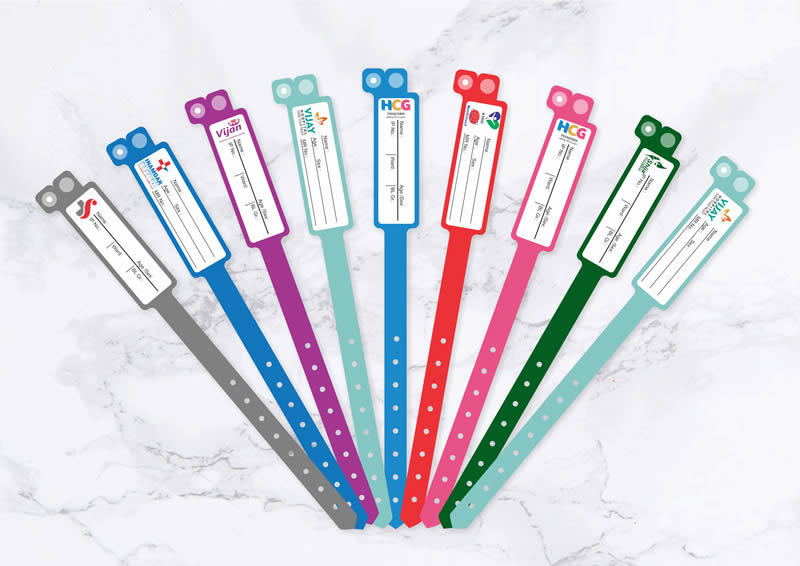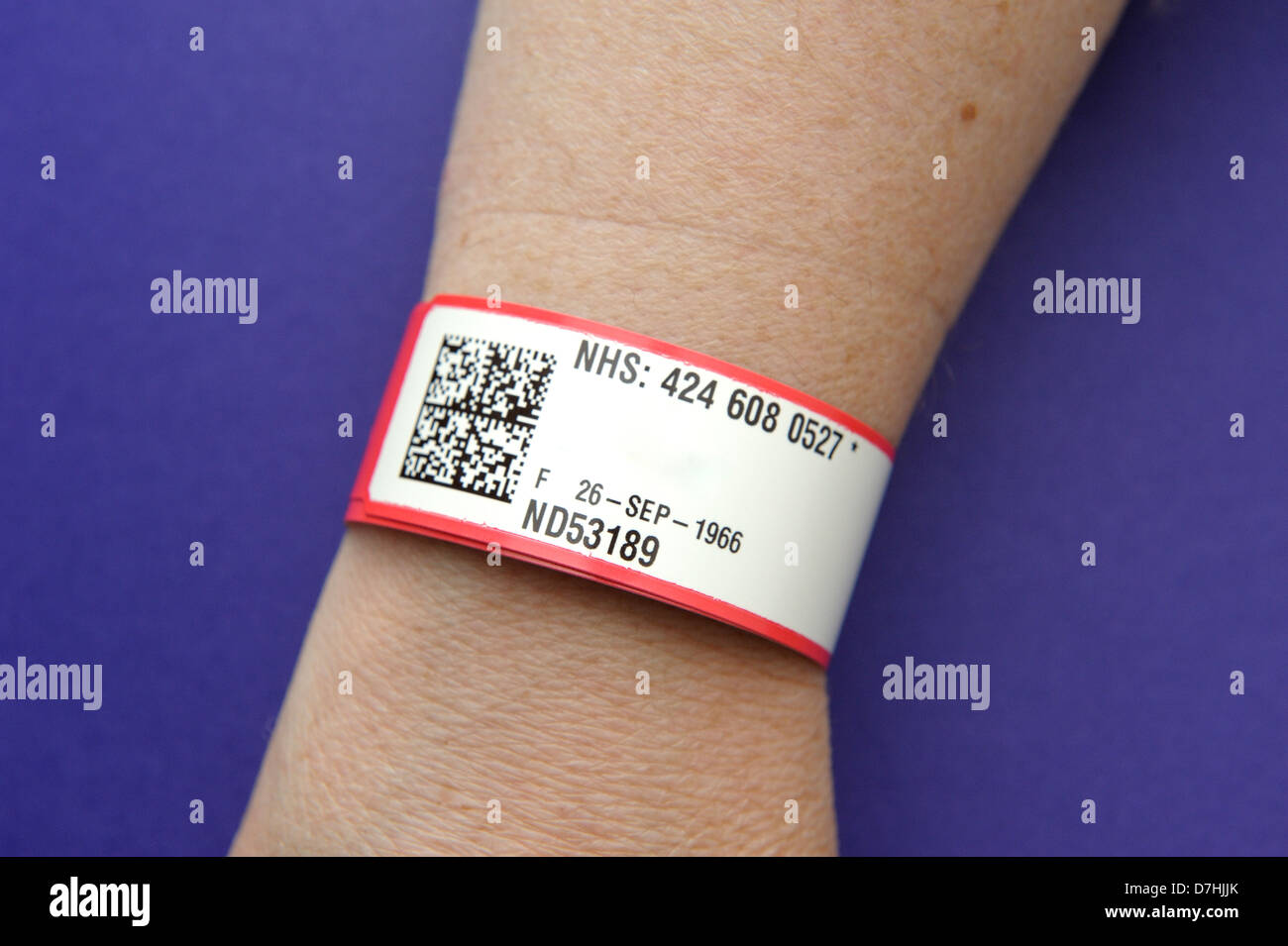Enhancing Safety: The Relevance of Client Recognition Bands in Health Care
In the world of healthcare, the efficacy of patient identification bands can not be overstated, as they serve as a fundamental safeguard against misidentification and succeeding mistakes. As we discover the complex duty of these bands, it comes to be evident that their importance prolongs beyond simple recognition, elevating questions about best practices and future developments in client safety.
Introduction of Person Identification Bands
Patient identification bands play an important duty in guaranteeing the safety and accuracy of person treatment in health care settings. These bands, generally worn on the wrist or ankle joint, act as a vital tool for validating individual identity, therefore lessening the danger of errors in therapy, medicine administration, and various other healthcare treatments. Made from sturdy materials, client recognition bands commonly include essential details such as the client's name, day of birth, clinical record number, and barcodes or QR codes for scanning.
The implementation of person identification bands is vital in different healthcare settings, including healthcare facilities, outpatient facilities, and long-lasting care establishments. They add to a systematic approach in individual management, making it possible for healthcare specialists to promptly and precisely recognize clients, specifically in high-pressure situations where quick decision-making is essential.
Furthermore, using these bands is straightened with regulatory requirements intended at boosting individual safety - Patient Identification Band. By making sure that each person's information is easily obtainable and conveniently verifiable, doctor can maintain a high standard of care, reduce the incidence of adverse events, and foster a culture of safety within healthcare institutions
Benefits of Accurate Recognition
Exact recognition is basic to boosting individual security and care high quality in health care settings. It works as the very first line of protection versus errors that might cause unfavorable client outcomes. By ensuring that each patient is appropriately recognized via reliable methods, such as individual identification bands, healthcare providers can significantly decrease the danger of misidentification, which can result in unsuitable treatments, drug mistakes, and even surgical mix-ups.
Moreover, exact patient recognition helps with effective interaction among medical care teams. When all staff participants can regularly identify individuals, they can share vital information a lot more efficiently, bring about much better control of treatment. This is especially vital in emergency scenarios where timely treatments are essential.
In addition, precise recognition supports conformity with governing requirements, therefore decreasing the threat of legal consequences for healthcare facilities. It cultivates count on in between patients and doctor, as people really feel much more safe knowing that their identities are being secured.

Usual Difficulties Faced
Ensuring reliable client identification in medical care settings presents a series of difficulties that can compromise security and care quality. One substantial difficulty is the variability in individual populations. People may get here in a state of confusion or distress, making exact identification difficult. Furthermore, language barriers can impede effective communication, making complex the verification procedure.
An additional challenge is the dependence on human factors in identification treatments. Medical care professionals might inadvertently misinterpret or forget Patient Identification Band identification procedures, especially in high-stress settings such as emergency departments. This can bring about mistakes, including the administration of wrong therapies or medications.
Technological concerns additionally pose difficulties. Electronic health record (EHR) systems are developed to enhance person recognition, system blackouts or customer mistakes can interfere with the procedure. The physical design of patient ID bands can lead to readability issues, especially in instances where bands are harmed or covered.
Last but not least, irregular training amongst personnel relating to identification procedures can result in gaps in expertise and technique. Resolving these difficulties is vital for improving client safety and ensuring that recognition bands offer their designated purpose effectively.
Ideal Practices for Execution
To successfully execute patient identification bands in health care settings, organizations should adopt a complex technique that prioritizes standardization, training, and technology combination. Standardization involves establishing clear methods for the style, application, and use identification bands throughout all divisions. This ensures uniformity and lessens the risk of mistakes linked to variations in band types or identifying methods.


Training is crucial for all healthcare staff to guarantee they comprehend the significance of exact individual identification, how to properly read and use identification bands, and the procedures to adhere to in situation of inconsistencies. Routine workshops and correspondence course can enhance this understanding and advertise a culture of safety.
Innovation integration plays a critical role in improving the effectiveness of person identification bands. Making use of barcode scanning or RFID innovation can improve the recognition process, permitting for real-time verification of patient identifications. In addition, electronic wellness document systems must be configured to include signals for mismatches in between the identification band and patient information.
Future Trends in Patient Safety And Security
As healthcare proceeds to evolve, the emphasis on person safety is most likely to magnify, driven by innovations in technology and a higher understanding of systemic threats. Emerging trends Look At This suggest a change towards even more integrated systems that take advantage of information analytics, expert system, and artificial intelligence to enhance client recognition procedures. These modern technologies can help identify prospective security concerns prior to they escalate, thus minimizing mistakes related to misidentification.
In addition, the implementation of blockchain technology may change how patient data is safely shared amongst health care providers, making sure that recognition bands are continually exact and up-to-date. This will certainly not only improve client security anchor however likewise assist in smooth interaction across multidisciplinary groups.

Furthermore, the growing concentrate on tailored medication is anticipated to affect client security methods. By incorporating group and genetic details right into recognition systems, healthcare experts can customize therapies better, minimizing the dangers of negative responses as a result of misidentification.
Verdict
Finally, client identification bands act as a crucial element in enhancing safety within health care atmospheres. By assisting in precise individual recognition, these bands dramatically lower the threat of mistakes related to misidentification, unacceptable therapies, and drug management. In spite of difficulties in application, adherence to best practices and the integration of arising modern technologies can better boost their efficiency. Eventually, the ongoing emphasis on robust recognition methods will certainly add to better client outcomes and overall safety and security in medical care settings.
In the realm of medical care, the efficiency of client recognition bands can not be overemphasized, as they serve as a basic guard versus misidentification and subsequent mistakes.Patient recognition bands play a crucial function in guaranteeing the safety and security and accuracy of person care in medical care settings. Made from durable products, client recognition bands typically consist of necessary information such as the individual's name, date of birth, medical document number, and barcodes or QR codes for scanning.
By making sure that each patient is properly identified with reliable ways, such as person identification bands, medical care service providers can dramatically reduce the threat of misidentification, which can lead to unacceptable treatments, medicine mistakes, and also surgical mix-ups.
In conclusion, individual recognition bands serve as an important part in boosting safety within health care settings. Patient Identification Band.
Comments on “Why Medical Facilities Select Patient Identification Band for Reliable Patient Tracking”